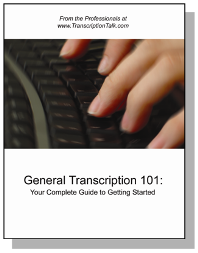Whether you're naturally organized or not, organizing your office space is an important part of increasing your efficiency as a transcriptionist because it gives you more time to focus on your transcription.
The following article from Modern Mom offers some great tips on how to get organized. Don't let the site name fool you; these tips are applicable for anyone, whether you transcribe outside of your home, in a dedicated home office or on the couch. I would also add that many of the tips for paper files also apply for online files. Stay tuned for future posts on how we each keep our physical environments as well as our computer filing systems organized.
Dedicate a good portion of a day, or an hour each day for a week, to this project. Once you've finished, you'll be surprised at how energized you'll feel in your "new" workplace.
Step 1:
Go through the piles of paper, throw away documents you no longer need and make categorized stacks of those you do.
I put post-its on the floor marked "Clients", "Financials", "Interoffice", etc. and place documents accordingly.
Also get rid of any junk cute trinkets, tchotchkes, knick knacks that just take up space.
Step 2:
File away all paper. Get out a P-Touch and make neat labels for your files. The more organized and attractive your filing system is, the more likely you are to stick with and use it.
For important items, invest in a nice desktop file or paper tray.
Make sure to go through the pile that accumulates in this "Hot File" at the end of each day and put away whatever you can.
Step 3:
Keep your desktop as clutter free as possible.
Limit personal items on your desk to a few photos and / or trinkets since your phone and computer take up significant space.
Arrange pens and other accessories neatly in drawers.
If you must store some items on your desk, use storage tins and organizers to keep them out of sight. A chaotic desktop can be unsettling to look at all day. A clear space is calming.
Step 4:
Update your Rolodex.
Remove any old entries and business cards that you don't have use for and take advantage of your Rolodex to keep important information such as frequently used online passwords and account numbers.
Step 5:
Beautify your workspace with simple embellishments like a nice plant or sculpture.
Avoid plants that require too much attention. The last thing a positive workspace needs is an unhealthy plant.
Finally, stay committed to organization!
Once you've set up your space, it's easy to maintain if you dedicate a few minutes to it each day.
If you end up where you started again in a few months, repeat and try again. Practice makes perfect.










































0 Comments:
Post a Comment